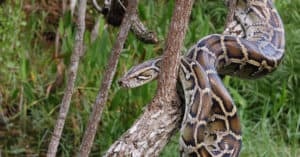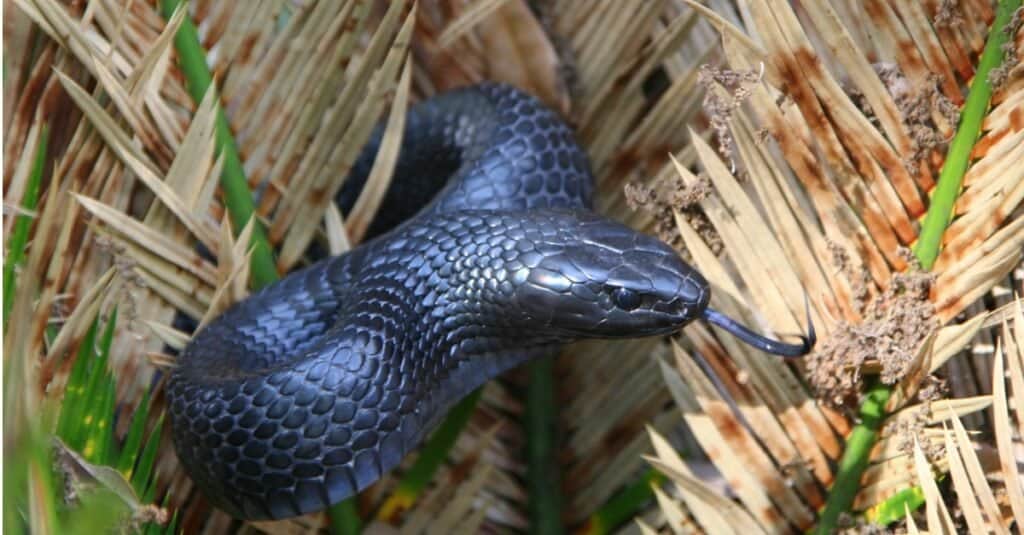Introduction
When it involves venomous snakes, Australia is home to several of the most fascinating and hazardous types on the planet. Among these, the Tiger Snake stands out not only for its potent poison yet likewise for its fascinating actions. Understanding the behavior of venomous snakes like the Tiger Snake is important for both wild animals fanatics and those living in locations where these serpents exist. This short article delves into different aspects of Tiger Snake actions, environment, identification, safety measures, and emergency treatment practices in instance of a snake bite.

Understanding the Behavior of Venomous Snakes Like the Tiger Snake
The Tiger Snake, scientifically referred to as Notechis scutatus, is infamous for its hostile nature when endangered. These snakes exhibit a variety of habits that can be fairly various from their non-venomous equivalents.
Characteristics of Tiger Snakes
The Tiger Snake is easily recognizable due to its distinct bands or red stripes that appear like a tiger's markings. They can differ in color from yellowish-brown to dark olive or black. This pigmentation serves not just as camouflage but likewise as a warning signal to possible predators.
Adaptability to Environment
One exceptional facet of their behavior is their adaptability to various environments. Discovered mostly in seaside regions, marshes, and wetlands across Australia and Tasmania, they can thrive in varied habitats consisting of city areas.
Hunting Techniques
Tiger Serpents are ambush predators primarily preying on fish, frogs, and tiny animals. They have eager vision and an intense feeling of smell which assists them in locating victim effectively.
Venom Composition
Their poison contains neurotoxins that affect the nerve system, causing paralysis or death in smaller sized pets. For people, instant clinical interest is important after a tiger serpent bite due to white crowned snake its potentially dangerous effects.
Natural Habitat of Tiger Snakes
Preferred Locations
Understanding where these serpents live sheds light on their behavior patterns. The tiger serpent habitat consists of:
- Coastal regions Swamps Grasslands Urban areas with plentiful water sources
Seasonal Movements
During warmer months, Tiger Snakes are more active as they indulge in sunlight or search for food. In contrast, cooler months see them pulling away right into hibernation sites.
Are Tiger Snakes Venomous?
Yes! The concern "are tiger serpents poisonous?" typically occurs amongst those unfamiliar with this species. Their poison is thought about among the deadliest among all serpent species worldwide.
Symptoms of a Tiger Snake Bite
If bitten by a tiger snake, signs may consist of:
- Localized pain Swelling at the bite site Nausea and vomiting Sweating and confusion
Immediate clinical assistance is vital as without treatment bites can cause extreme wellness difficulties or even death.
First Help for Snake Bites: Quick Action Guide
Knowing exactly how to administer emergency treatment for a serpent bite can save a person's life. Here's what you ought to do:
Step 1: Remain Calm
Keeping calm helps decrease heart rate which reduces venom spread.
Step 2: Paralyze the Affected Area
Keep the influenced most venomous snakes in australia arm or leg still and below heart degree if possible.

Step 3: Call Emergency Services
Always look for professional clinical help immediately after a snake bite.
First Help for Snake Bite Package Essentials
A fully equipped snake bite emergency treatment kit ought to include:
- A compression bandage Antiseptic wipes A set of scissors A cold pack
Safety Preventative measures: Preventing Serpent Bites in Australia
Awareness Programs
Educating areas about local snake species and their actions can considerably minimize encounters leading to bites.
Avoiding Harmful Areas
Staying away from long yard during warmer months decreases contact with serpents that may be resting or hunting.
Common Misconceptions Regarding Tiger Snakes
Many people believe false impressions about the actions of tiger snakes cause unneeded worry. Right here are some information:
Myth 1: All Tigers Are Aggressive
Not all tiger snakes will certainly display aggressiveness if left uninterrupted; several like taking off as opposed to confrontation.
Myth 2: They Chase Humans
Tiger snakes do not actively chase people; they may strike when they really feel intimidated however will normally pull away if provided space.
Conservation Efforts Related to Venomous Snakes
Conservation initiatives focus on enlightening communities concerning shielding local wildlife while lessening human-snake interactions.

Importance of Ecosystems
Understanding that venomous snakes play an essential function in maintaining eco-friendly equilibrium assists foster gratitude instead of concern in the direction of them.
http://rowanahtf674.huicopper.com/visual-guide-first-aid-for-a-snake-bite-with-picturesFAQs About Tiger Snakes
What must I do if I experience a tiger snake?- Maintain distance and slowly retreat without unexpected movements.
- While attacks aren't extremely typical because of recognition efforts, they still occur yearly within Australia.
- Baby tiger serpents can supply full doses of poison regardless of being smaller sized; hence caution is advised around them.
- They largely eat frogs, fish, little mammals like rodents, and other reptiles.
- It's unlawful in many jurisdictions without appropriate licensing because of security concerns regarding their venom.
- Wear strong boots and stay on significant trails; look before positioning hands or feet into concealed rooms like rocks or logs.
Conclusion
Understanding the habits of venomous snakes like the Tiger Snake not only boosts our knowledge however likewise advertises security recognition among those living near their environments. From acknowledging their qualities, recognizing first aid protocols adhering to a bite, through involving preservation efforts-- every facet plays a crucial function in promoting coexistence with these fascinating reptiles while appreciating their location within our ecosystem.
As we grow our understanding via education and experience, we add positively toward guaranteeing both human safety and security and wildlife preservation-- benefitting all parties involved!